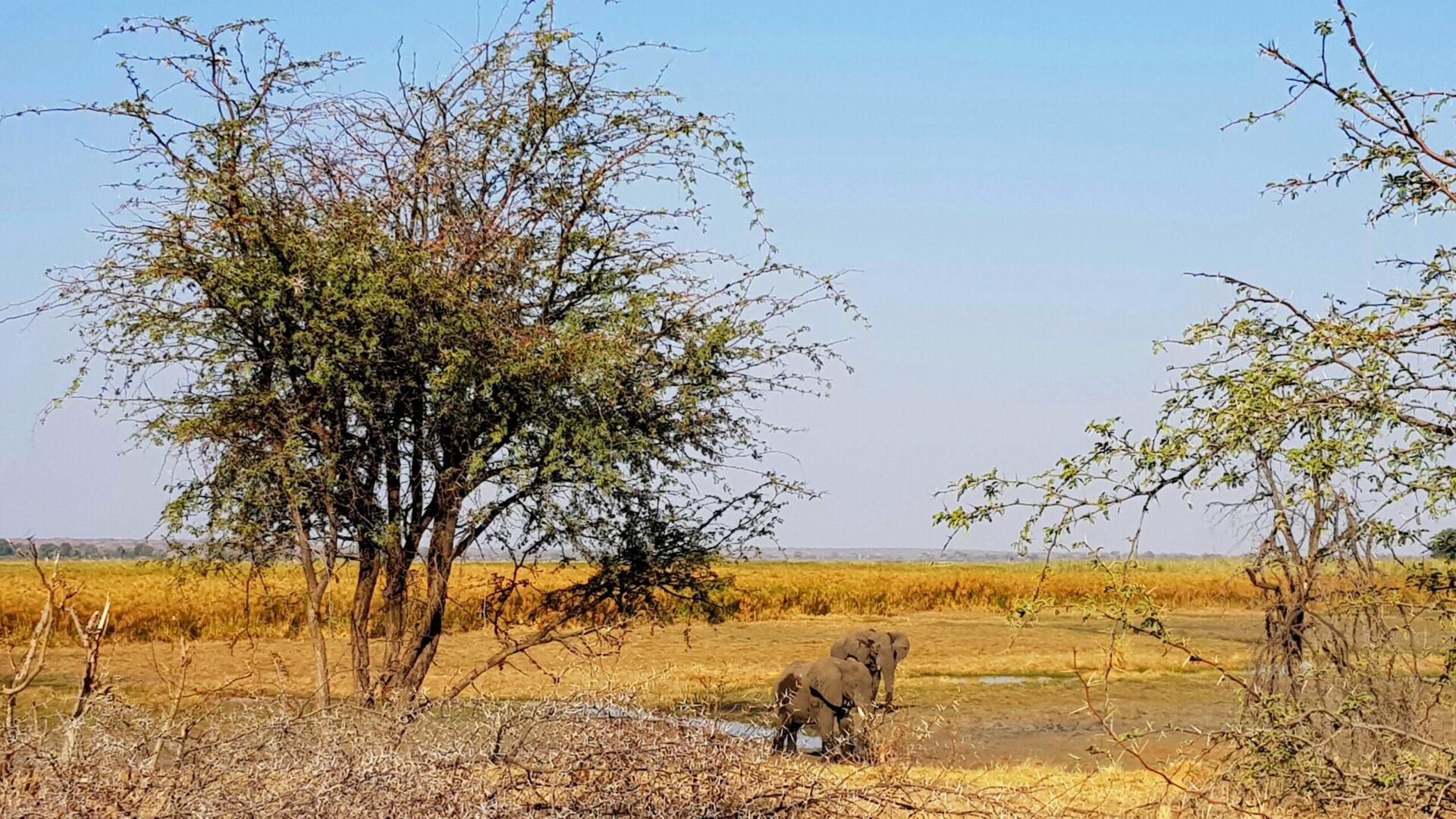The first time you meet an elephant on one of your trips to Africa does not leave you indifferent. It is one of the most imposing, elegant and majestic animals you can see on a safari. They are part of the big Big Five. These animals, which can live for about 60-70 years and only sleep for about two hours standing or lying down, are one of the most imposing mammals in the world.
They are also considered one of the smartest animals on the planet. They are said to have social and spatial memory, because they can return to places that have been beneficial to them in the past. They also show a great capacity for empathy, cooperation and psychological grief after the death of a loved one. Herds of elephants remember and visit the place where their relatives died, symbolizing a kind of ritual with the remains of their bodies.
African elephants are the largest land animals on the planet. Elephants, in general, have a great cultural and symbolic significance all over the world, but especially in the places of origin that are Africa and Asia. African elephants stand out for their ears in the shape of the continent that gives them their name. They are larger than their Asian counterparts, and at the same time, there are two types: the African savannah elephant and the African forest elephant.
The ears of these huge animals radiate heat to help cool and lower body temperature. Each elephant has different ears and is a great way to recognize them, like fingerprints in humans. They really like the water, they enjoy showering in the waterholes they find along the way. They drink about 200 liters a day, and if they don’t have water nearby, they pluck the bark of the baobab to quench their thirst. They usually cover the skin with dust after getting wet, as a protective measure against mosquitoes and other parasites, as well as the sun.
The trunk is a long nose that is used to smell, drink and absorb water, breathe, sweep and grab things, especially those they want to eat and also to greet their peers. They have about 100.000 muscles in the trunk, which allow them to make all these characteristic movements when we see them for a while. The humans have all over the body about 600 muscles, what a difference, isn’t it? Depending on the position of the trunk can indicate different states:
– Submissive state: The ear and one end of the mouth are touched with the trunk.
– State of alert or danger: they raise the trunk.
– Imminent state of attack: They hit the chest with the trunk.
This trunk also allows them to smell up to 10 km away, so that, elephants are considered as one of the animals with the best smell. They are able to emit low frequency sounds, below the auditory range of humans. They have a system of sounds to communicate with each other, they can express different emotions such as joy or fear. They can communicate between different groups that are thousands of miles away.
All elephants, whether male or female, have tusks. They are used to move and lift objects, to collect food and to remove bark from trees. These tusks in times of drought, are used to dig into the ground to find water. In addition, males use their tusks to fight each other when marking territory. Elephants are said to be right-handed or left-handed depending on the tusk they use the most, which will usually be the smallest and most worn. Once a tusk is broken, it is removed, it is not born again.
These tusks are now extremely sought after by poachers, who are looking for ivory to sell for large sums of money. This ivory is used for decorative objects, luxury furniture parts, chess pieces, piano keys, billiard balls, living room and dining tables and a long list of other things. Some elephant populations are still in danger due to this sale of tusks at the illegal market. The African elephant population is said to have dropped dramatically to 50%.
These animals also travel long distances in search of food. They feed on fruit, roots, tree bark, grass…with large quantities! Adult elephants can eat about 135 kg of food a day! They feel the vibration of the earth through their soles of their feet, which gives them a lot of information. For example:
+ They can locate water from the vibrations of the watercourse at a great distance, a very vital advantage in dry seasons.
+ They can detect earthquakes.
+ Females can find a male when they are ovulating.
Females live in family herds with their young with a large social structure. It is usually led by the older female. The groups are made up of grandmothers, mothers, offspring, sisters, aunts… Males, on the other hand, are usually alone or in groups of single elephants until the time of mating. At this time, they suffer from what is called “must”, a period in which the male is very aggressive and with increased testosterone. You have to be careful with them, usually seen by a “resin” that they generate around the ears.
The pregnancy of a female elephant lasts longer than many other mammals, about 22 months. Usually, the female that gives birth, is usually accompanied by other females that are considered the “midwives”. These accompany and care for the mother during childbirth, caressing her trunk to relax her. They also make sure that there are no predators approach. Elephant calfs, which are initially born blind, usually weigh about 90-100 kg and usually suckle up to 2 years old. Females breed every four to five years.
The elephants are very important for the biodiversity of the habitat where they live. They are the creators of paths in the dense forests where they live and thus allow other species to circulate there later. Many species of trees in Central Africa depend on the seeds that pass through the elephant’s digestive tract, so that they can germinate later. They also help to nourish the earth with its excrement and giant footprints, creating microhabitats when filled with water.
How to avoid an elephant attack?
An estimated 500 people die each year from an elephant attack. They can become dangerous and threatening especially if they consider that you are in their territory or see that you may be a danger to their young. You need to know what to do and how to act in case you find one of them. We advise you to:
– Respect the elephants territory with a prudent and safe distance. Observe your surroundings and see what route the herd of elephants is taking so as not to get in the middle of their journey. Also, place the car in a position where you can leave quickly if the animal is approaching.
– Interpret the signals the animal is making. It is necessary to distinguish if it is a real or fictitious attack. Many elephants first try to see if you are a real threat and if you are aggressive. If the elephant’s ears are relaxed or fan-shaped, it will usually be a “fictitious” attack. On the other hand, if the animal’s ears are bent backwards and the trunk raised but twisted inwards, we will say that it is a real attack.
– Listen to the warnings: usually when the elephant is angry, it makes loud noises to alert you to leave its territory. You will see him sweeping directly at you.
– Pay attention to the legs: another indicator that will attack is the movement of one of the front legs. It will swing the leg back and forth.
– Try to be calm at all times: don’t move and don’t look him in the eyes. Another possibility is to move in the opposite direction to where the herd is if you see that the animals are approaching or are warning. That way, you’ll be safe from them.

















0 Comments